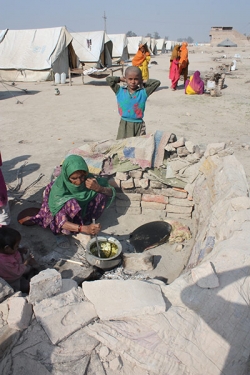 This week I continue with Rosaleen’s quest for positive stories on ageing in the media. I spend a large part of my work day going through articles, blogs and alerts and it can be disheartening.
This week I continue with Rosaleen’s quest for positive stories on ageing in the media. I spend a large part of my work day going through articles, blogs and alerts and it can be disheartening.
Older people aren’t necessarily ‘newsworthy’ except when they are bed-blocking in hospitals or burdening their children who are forced to look after them.
However, the New Year has brought with it an interesting development. The implications of an ageing population, particularly in developing countries suddenly appear to be a concern.
Growing older with failing health systems
February saw two World Bank reports on the health crisis affecting South Asian countries. The average life expectancy in South Asia is now at 64 years and people are getting older without the health care and living conditions that were accessible to older people in previous decades.
While releasing the second report on Tackling Non-Communicable Diseases in Sri Lanka last week, World Bank country director for Sri Lanka and Maldives stated that: “Sri Lanka is challenged by two transitions, an aging population, also known as the demographic transition and an epidemiological transition that is a shift of disease burden from infectious to non-communicable diseases.”
This is not unique to Sri Lanka alone. South Asia is at a crossroads with rising inequality, a growing share of the population ageing unhealthily and health systems that are failing to adjust to people’s needs.
Food crisis
IRIN has a rather intriguing story on the severe food crisis in Pakistan. A survey conducted with UNICEF’s support has revealed a grave global acute malnutrition (GAM) rate of 23.1% in children aged 6-59 months in flood-affected areas of northern Sindh. The World Health Organisation defines 15% as the emergency threshold level.
According to the article, the situation is not a product of the floods, but of the poverty and exploitation caused by the country’s feudal system.
“I know nothing about land ownership – just that we struggle to feed our children, and eat less ourselves so they have more on their plates,” says Sumundri Bibi, a mother of six at a flood-relief camp in Sindh.
The same sentiments were echoed by Sarah who Rosaleen spoke to last month during her trip to Pakistan. Many villagers believe that it could take up to two years for the land to be cultivable again, and they are now looking for alternatives to support themselves and their families. You can read Rosaleen’s blog about the effects of rising food prices on flood victims here.
Good news
The last week of the month brought with it a whole lot of motivation. Our work with older agricultural workers and traders in Pakistan has been published on the Guardian development site. Check out our photogallery, it’s got captions and everything!
So, even though the stories don’t reflect our ‘age helps’ message, the fact that the significance is being finally realised is satisfying…for now!
